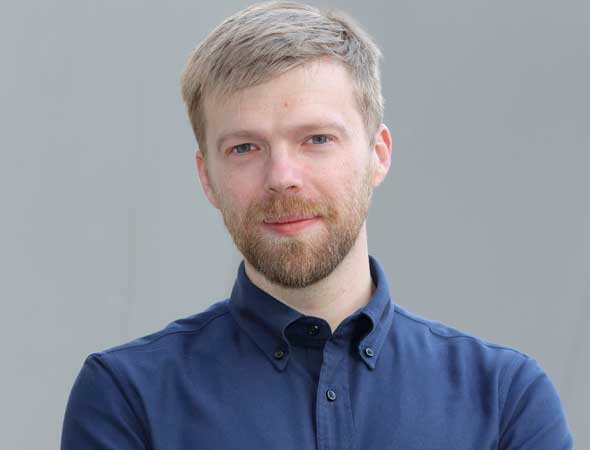Norman – Play
PERFORMANCE TIME: 40 MINUTES

Andrew Norman
Arts writers have borrowed the word “synesthesia” from neurology to denote a functional “crossing” of the senses—as with the many composers of genius through the centuries who have experienced seeing musical notes as colors. In a looser sense, paintings or photographs are said to be “rhythmic” or “loud.” This approach comes in handy when trying to describe the sounds produced by Norman’s questing, boundary- crossing creativity. Many of his musical subjects are architectural; for example, he has evoked the visual and spatial impressions of architect Frank Gehry’s work in a way that could be compared to Virgil Thomson’s musical “portraits.” In experiencing the Norman sound, it pays to listen for effects that could be described as rhyming, angular, and texturally gleaming— words that could apply equally well to Gehry’s sculptural buildings.
Play earned Norman the 2017 Grawemeyer Award for Music Composition. In a 2016 article on his acceptance of the award, the New York Times described Play as “rollicking” and “gaming-influenced.” Here is an excerpt from the composer’s own comments about the work: “… Play is a cycle of pieces, a body of work that I have been writing and rewriting for almost five years. Play explores many different ideas—ideas about choice, chance, free will, and control, about how technology has rewired our brains and changed the ways we express ourselves, about the blurring boundaries of reality in the internet age, the murky grounds where video games and drone warfare meet, for instance, or where cyber-bullying and real world violence converge. Play touches on the corrupting influence of power and the collapse and rebirth of social systems, but it also explores the physicality and joy of instrumental playing, as well as the many potential meanings of coordinated human activity—how the display of massed human synchronicity can represent both the communal best and coercive worst of our race… We flip the switch on a crazy, topsy-turvy world where the percussionists discover that their instruments have all sorts of powers over the rest of the orchestra. They have the power to turn other players on and off, to make them play forwards or backwards, louder or softer, faster or slower, to trade them out one for another or make them rewind and retry ideas again and again until they are gotten right.”











